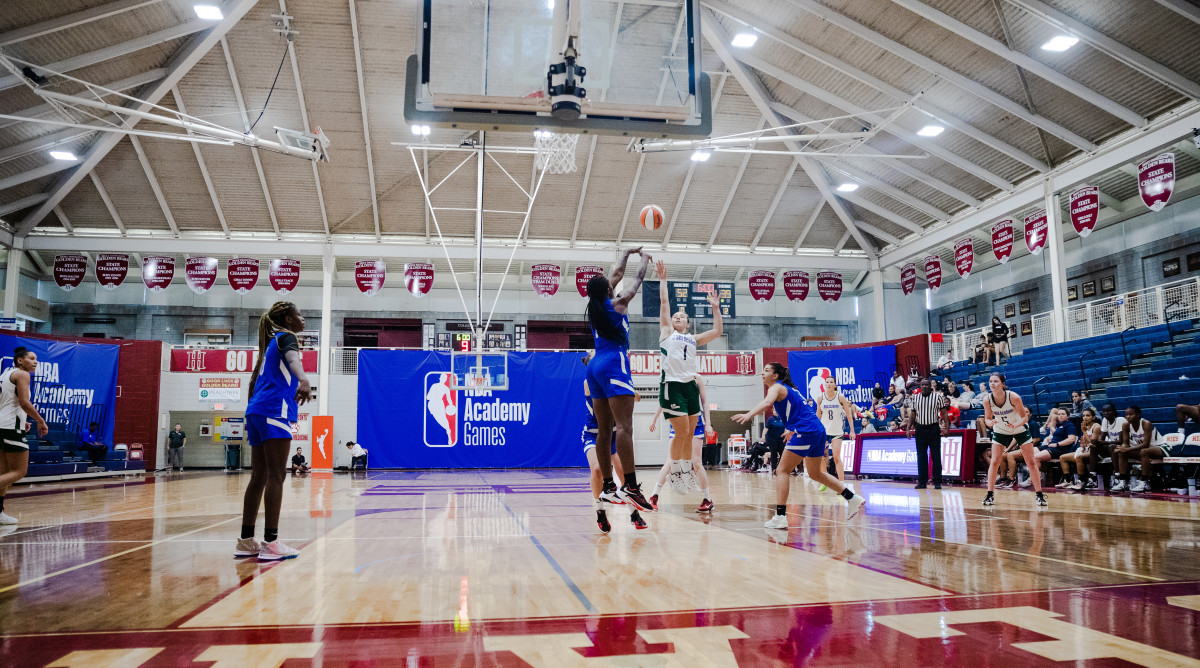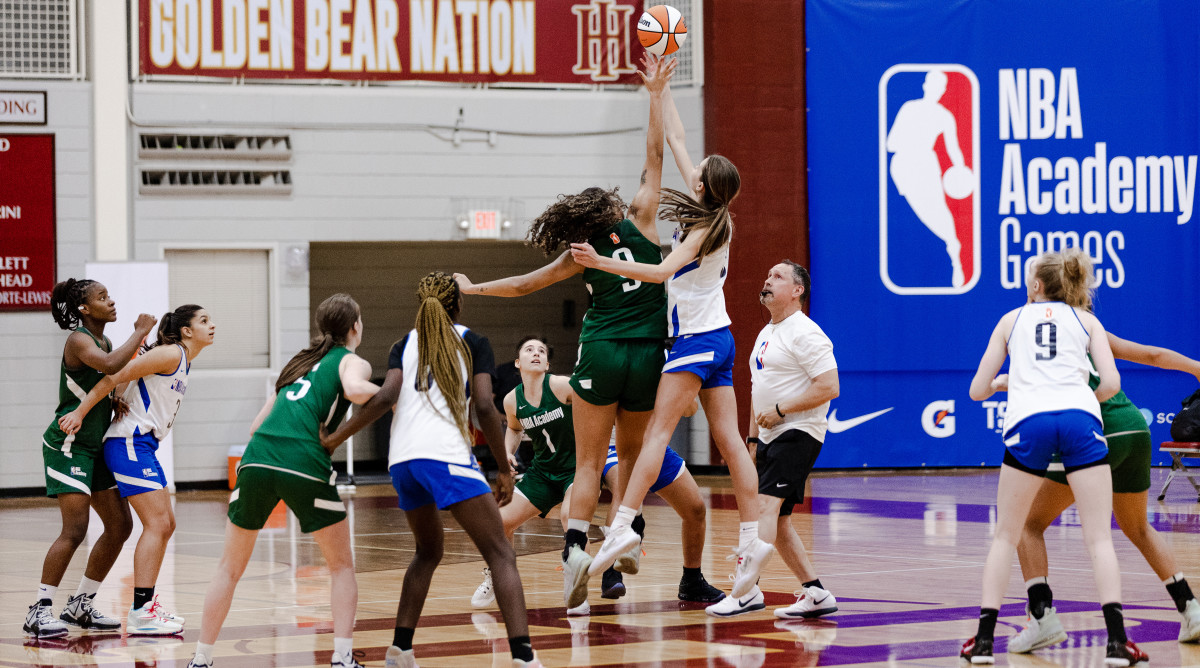International Prospects Get a Taste of the U.S. Women’s Game With NBA Academy


A seven-hour time difference makes it difficult for Miky Panait to watch her two favorite WNBA players live. But when the 16-year-old Romanian guard wants to pick up moves from future Hall of Famers Sue Bird and Diana Taurasi, she turns to YouTube and goes down a rabbit hole in search of two decades of basketball wizardry.
Last week, however, Panait didn’t need the internet to come into contact with members of the WNBA or to further develop her repertoire. Instead, the 5’ 7’’ guard was one of around 40 top international prospects who took part in the inaugural Women’s NBA Academy Games in Atlanta. There, for two days, she competed on one of four teams of international players, which had been shuffled together with girls from 21 countries. More than 50 NCAA coaches, from schools like Michigan, Texas A&M and Clemson, registered for the event, and three WNBA teams—the Storm, Liberty and Dream—also had personnel in attendance for parts of it, according to Monica Rogers, the elite basketball women’s operation lead at the NBA.
“I’m seeing some interesting moves here,” Panait says. “For sure, I can steal some of them.”
As the WNBA looks to continue to add international players to its ranks—the league had 24 players born outside of the U.S. as of mid-May—events like the one conducted last week will help make a clearer pathway. Exposure was key to the camp’s inception, per Rogers, who was also the No. 2 pick in the 2010 WNBA draft, whether it was in the form of players developing skills and learning about the W, or coaches witnessing young talent firsthand.
But in terms of a starting point, Rogers says that “a lot of [the prospects] don’t even realize they can obtain full scholarships at universities and obtain their degree,” which is why an NCAA official also conducted a session earlier in the week to help those in attendance understand possible collegiate paths.
The NBA launched its Academy women’s program in 2018, and has hosted camps in Mexico, Australia and Senegal, as well as a virtual program amid the COVID-19 pandemic. Thirty-five participants have committed to or attended an NCAA Division I program and 38 others have gone to play at prep schools, junior colleges or other non-D-I schools. Thus far, only one player, Liberty center Han Xu, has participated in an NBA Academy program and been drafted into the WNBA.
“The measure of success is definitely how many coaches reach out with interest in the girls that we invited,” Rogers says. “How many touch-points they have with those NCAA and WNBA coaches. Long-term, who eventually is placed into a four-year program with a scholarship, and thereafter drafted.”
Ebony Hoffman, an assistant coach for the Storm who was in attendance for Thursday’s action, says there were “definitely WNBA prospects there” in Atlanta. And, Hoffman adds, that as the “league continues to grow and as it becomes even more positionless, international basketball is exactly” what it is trending toward. It’s one reason why showcases like the one last week are increasingly valuable for talent evaluators, and why Rogers says it’s already her “plan and hope” to conduct a similar event next year.

While in attendance, 17-year-old Agata Makurat got a taste of what a positionless future means. Standing at 6’ 3’’, Makurat, who has already committed to playing at Vanderbilt starting in the fall of 2023, is used as a guard in her native Poland. But she says coaches during the recent showcase helped her develop more as a post-player, and provided her tips on screen-setting and box-out technique.
Makurat comes from a basketball family as both of her parents were players, and her two older sisters, Ola and Anna, played collegiately as well. (Ola played at Liberty, Utah and Arkansas State. While Anna spent two seasons at UConn before returning to Europe to play professionally.) Agata says that while she has the opportunity to go pro straight from high school, she’s decided to go to a U.S. college to further develop, as both a player and person, and to get her degree. From there, Makurat says, “My biggest dream is to play in the WNBA one day.”
Panait, the Romanian guard, has not yet decided on what’s next in her basketball journey. “This is why I wanted to try this experience here,” she says. And among the most impactful parts of her time last week was a panel discussion featuring four former WNBA players in which they discussed their professional pathways.
Key to any possible rise will be performing well in front of basketball decision-makers, and both Panait and Makurat appeared to do just that. Alongside their seven other teammates (all from different countries) Panait and Makurat’s team went undefeated and were the event’s unofficial champions.
“It’s a great experience for me,” Makurat says. “It’s really good playing games against the best girls in the world.”
More WNBA Coverage:
• It’s the End of an Era for Sue Bird and Diana Taurasi
• Stefanie Dolson’s Best Career Decision? Her Dog, Theo
• Aari McDonald Is Reintroducing Herself With a Sophomore Glow-Up
